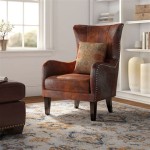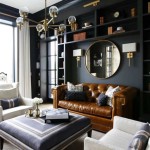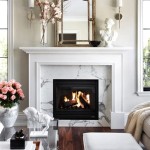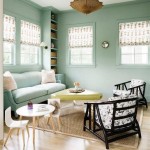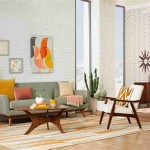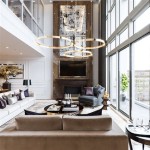Decorative Objects for the Living Room: Adding Personality and Style
The living room is often considered the heart of a home, a space where families gather, entertain guests, and relax. Decorative objects play a crucial role in transforming this space from functional to inviting and aesthetically pleasing. From statement pieces to subtle accents, these elements can add personality, create visual interest, and reflect the homeowner's unique style. The key to successful living room decor lies in choosing objects that complement the existing furniture and color palette, while adding a touch of individuality to the space.
Statement Pieces: Creating Visual Impact
Statement pieces are large, eye-catching objects that immediately draw attention within a room. These decor elements serve as focal points, anchoring the overall design and setting the tone for the space. Common examples of statement pieces include:
- Sculptures and Artworks: Abstract sculptures, contemporary paintings, or even vintage posters can add a touch of sophistication and artistic flair to the living room.
- Large Mirrors: Mirrors not only reflect light, making the space feel larger and brighter, but also serve as decorative elements. A large framed mirror can be a statement piece, while smaller mirrors can be clustered together for a more eclectic look.
- Rugs: Area rugs define a space, add warmth, and can be used to introduce bold patterns and colors. A large, patterned rug can serve as a statement piece, anchoring the furniture and creating a distinct focal point.
- Floor Lamps: Floor lamps are not only functional but can also be decorative statements. A unique lampshade or a lamp with a distinctive base can add a touch of personality and enhance the overall ambiance.
Adding Texture and Depth with Accents
While statement pieces create focal points, accent pieces help build upon the overall design, adding texture, depth, and visual interest. These smaller objects can be strategically placed to complement the existing furniture and color scheme, enhancing the room's visual appeal. Examples of decorative accents include:
- Throws and Pillows: These items add a touch of warmth and comfort, as well as introduce different textures and patterns. Velvet, cashmere, or faux fur throws can add luxury, while textured pillows can create visual contrast and enhance the overall aesthetic.
- Vases and Plants: Vases filled with fresh flowers or dried arrangements bring life and color to the space. Plants, such as indoor ferns or succulents, add a natural touch and can purify the air.
- Books and Magazines: Stacked books and magazines not only add a touch of intellectualism but also offer a more relaxed and lived-in vibe to the space. These items can be displayed on coffee tables, shelves, or even in decorative baskets.
- Candles and Candle Holders: Candles add warmth and create a calming atmosphere. Candle holders come in various styles and materials, allowing for customization and a personal touch.
- Decorative Trays: Trays are functional and decorative. They can be used to display small objects, such as candles, coasters, or trinkets, and add a touch of organization and visual appeal.
Creating Balance and Cohesion
When selecting and placing decorative objects, it's crucial to consider balance and cohesion to create a harmonious and welcoming atmosphere. The overall design should feel intentional, reflecting the homeowner's style while complementing the existing furniture and color palette. Here are some tips for creating a balanced and cohesive living room decor:
- Choose a Color Palette: Start with a color palette that sets the tone for the room. Neutral colors like white, gray, and beige provide a calming backdrop, while bolder colors can add energy and vibrancy.
- Mix and Match Textures: Create visual interest by incorporating different textures, such as smooth glass, rough wood, and soft fabrics.
- Consider the Scale: Pay attention to the size and scale of decorative objects. Choose pieces that are proportionate to the size of the room and the existing furniture.
- Use Repetition: Repetition of colors, patterns, or materials can create a sense of unity and balance within the room.
- Group Similar Items: Cluster similar objects together to create visual interest and draw the eye. For example, a collection of antique books can be grouped together on a bookshelf, while a set of framed prints can be displayed on a wall.
Decorative objects are more than just embellishments; they are expressions of personality and style. By carefully selecting and arranging these elements, homeowners can transform their living rooms into inviting and aesthetically pleasing spaces that reflect their individual tastes and create a welcoming atmosphere for family and friends.

Decorating Items To Choose For Your Living Room Beautiful Homes
:strip_icc()/101653361-2473aa340dc345ab824b1a314a1ef105.jpg?strip=all)
15 Tips For Arranging All Kinds Of Accessories

13 Decorative Objects For A Midcentury Living Room Hunker Mid Century Modern Accessories Wall Decor

58 Best Wall Art Ideas For Every Room Cool Decor And Prints

Modern Decorative Objects With Intriguing Personalities

Decorative Objects The Must Have Accessories For Styling Your Home

77 Best Living Room Decor Ideas 2024 Unique

Favorites Under 50 Decorative Objects Centsational Style Home Decor Interior Design

How To Make Your Living Room More Welcoming

Get The Look Harvest Decor Objects West Elm

